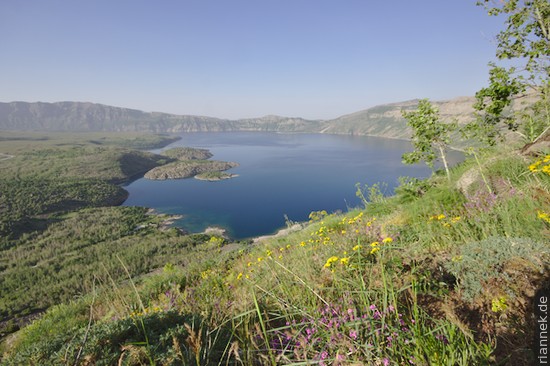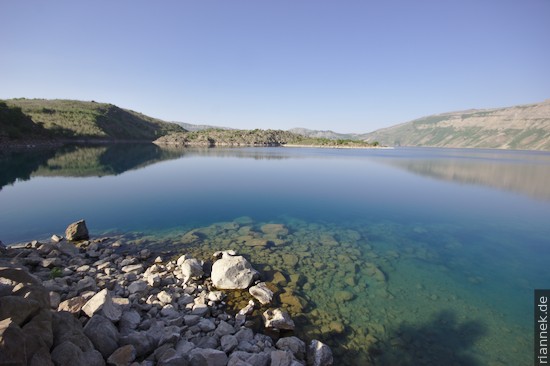
The volcano Nemrut Dagi — not to be confused with the eponymous excavation of an ancient royal tomb — is located near Tatvan, a town on the south-western corner of Lake Van in Eastern Anatolia. Its lava flows also block the former outflow of the lake, which has since become increasingly alkaline….
The volcano consists of a large caldera (cf. The Formation of Mountains) with a diameter of 9×5 km, the highest summit at the caldera rim is at an elevation of 3500 m. The special thing about this caldera is its interior: lakes, lava domes and obsidian flows. A large crescent-shaped lake nestles on one side of the rim. A second much smaller lake nearby is called Iligöl, which means “warm lake”. The water is not exactly like a bathtub, but at least it is not quite as cold. In between and in the surrounding area there are some hills made of lava blocks, some of which are obsidian.

Obsidian is a natural rock glass, it is black and breaks into sharp-edged shards. Usually it is rhyolite, the volcanic equivalent of granite. At Nemrut, however, the magmas are strongly alkaline, with peralkaline trachyte and peralkaline rhyolite (or pantellerite). When crystallisation does start in the glass, the obsidian takes on a strange green colour.
The obsidians from Nemrut Dagi were used in the Neolithic period to make blades that went far: they were found in many Neolithic excavations in the Middle East, for example in Syria and Iran.
The access road begins on the outskirts of Tatvan in the direction of Bitlis. Shortly after the large roundabout, there is a small brown sign next to a petrol station. The road is well maintained up to the mini-ski area, then it gets bumpier. There are a few picnic areas at the warm and cold lake.
Read on
Lake Van
Nemrut
Meke Gölü
Basalt columns near Garni, Armenia
The Formation of Mountains